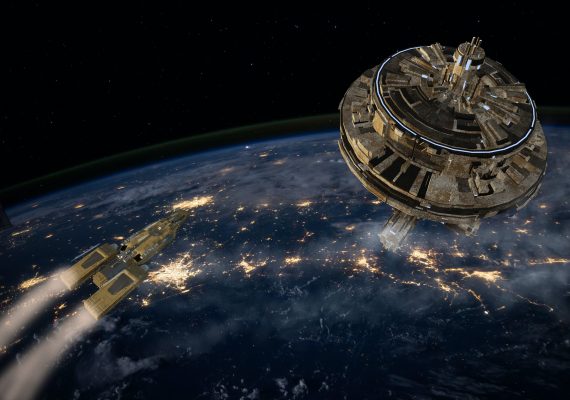Y+28, Day 1: “You, in the jail,” the voice said over the intercom. Sheriff Del Anderson stood and switched on the voice channel. Del watched the warped video of the shady figure in the hallway outside the Sheriff’s office. The facial recognition software failed to place the individual. Either the man wasn’t in the system, […]
A Paradox: A Description of the Fermi Paradox by Torn MacAlester
It Starts With A ParadoxPart 2 of World Building for Science Fiction Part 2—It Starts With A Paradox by Torn MacAlester Photo by Rakicevic Nenad from Pexels The Fermi Paradox The Fermi paradox tries to answer: Where are they (the aliens)? It looks at how fast travel is across the galaxy. It says […]
The Soldier: A Vignette by Torn MacAlester
The Soldier Y+0 Granger realized that the whirlwind month had ended as he headed to the Greyhound bus, hoping to see if he could get a trip. According to the sergeant in the discharge barracks, his chances of getting a home trip to Wyoming were next to nothing. He had the Army travel voucher and […]
Sins of the Son: A Vignette by Torn MacAlester
Sins of the SonPhoto by Brett Sayles from Pexels Sins of the Son By Torn Macalester “Did you hear it?” The patient asked over the cacophony of emergency equipment as the doctor worked on him and six other patients that were nearly as bad. “Hear what?” The doctor asked, placing the gauze pads over the burns. “Make sure we […]
Chat on Discord: WED JUL 5th, 9PM EDT
DiscussionsEach Week, Torn hosts a discussion on his discord channel: Torn MacAlester Science Fiction. Join the discussion and learn what he thinks about prior to writing his science fiction stories. Week of Jul 2, 2023 [2nd Jul at 1 PM EDT (6 PM GMT), 5th Jul 9 PM EDT (6th 2AM GMT)] Artemis 1 […] […]
Decisions: A Vignette by Torn MacAlester
Decisions Y+13 Nils heard Katie enter the room as he finished typing the letter and sent it to the printer. He’d been using the back bedroom as an office ever since they had moved to Houston. He’d set up a communications center in the room so that Katie could keep in communication with him whenever […]
Torn’s Science, Technology, & Science Fiction 1–7 May 2023
Science Fiction and the Drake Equation I started thinking about one of the classic authors of science fiction, and the setting he created for some of his stories. I often wondered what the implications for the Drake equation would be in that particular setting. I’ve taken a subset of the stories for this setting, since […]
Torn’s Science, Technology, & Science Fiction 24–30 April 2023
Redundancy Seeing SpaceX’s prototype starship explode after launch reminded me of the necessity of redundancy in launch systems. I think back 10 years when over a short time span when Orbital, SpaceX, and Roscosmos all had anomalies with their cargo missions bound for the International Space Station. Without redundancy in capability, a launch failure in […]
Torn’s Science, Technology, & Science Fiction 17–23 April 2023
Fabulae Lunae: 1. Thunder Moon Tussle Available now at Amazon.com: Thunder Moon Tussle (kindle edition) Nils Carmike, a fallen from grace astronaut turned smuggler, forges a new life on the lunar frontier. Harassed by the strikingly beautiful and demanding Deputy Miller, he is faced with fines and conflict, resulting in a tumultuous relationship and ultimatum […]
Torn’s Science Fiction, Technology, & Science 2–16 April 2023
Fermi Paradox The Great Filter The Fermi Paradox creates an interesting dilemma from science. What is the filter that seems to be preventing conclusive evidence of alien civilizations? We have several options: Planets capable of supporting life: That might be a deceptive description. What is a planet capable of supporting life. The first indication is […]
